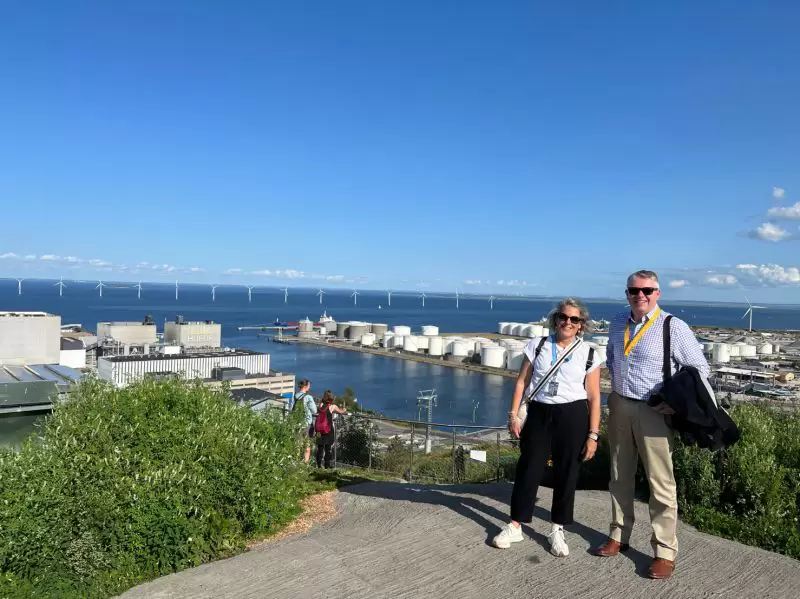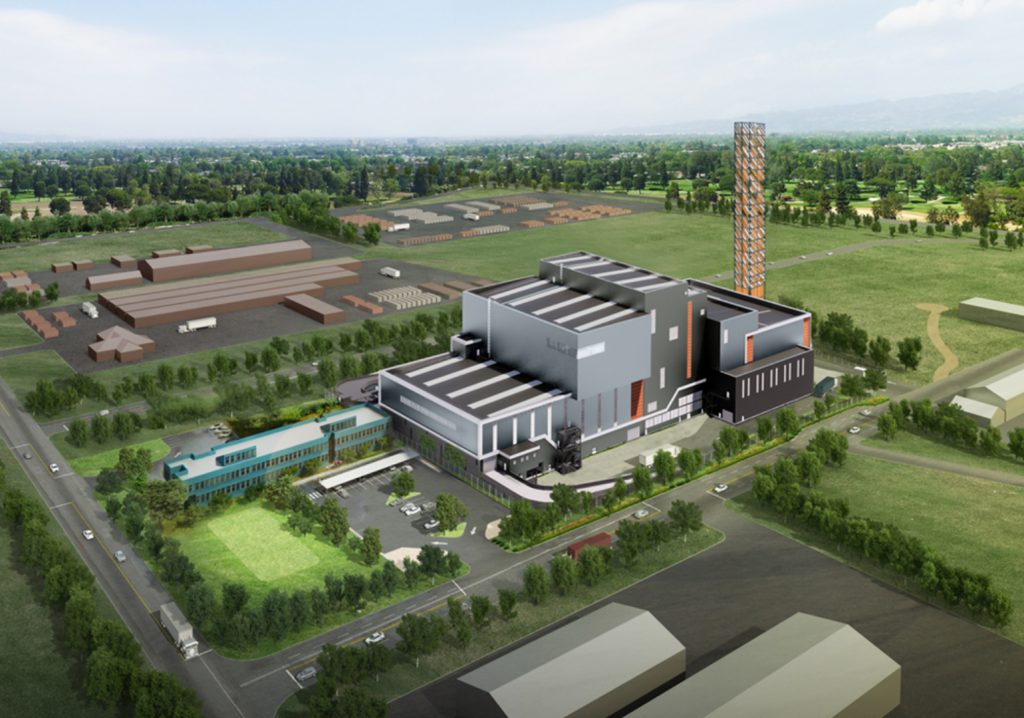Could producing power from incinerated garbage be good for the environment? Engineers explain why Australia is adopting waste-to-energy technology.
The city of Copenhagen is a picturesque metropolis that spreads over a series of natural and artificial islands along Øresund strait. Residents enjoy a high quality of life, in an easily navigable urban environment recognised globally for its environmental sustainability.
One local attraction enjoyed by residents of this bustling Scandinavian burg is the Amager Resource Centre (ARC), a facility in the neighbourhood of Amager East where residents can ski down a grassy slope, enjoy public gardens and make use of a climbing wall.
But ARC’s principal reason for existence has nothing to do with recreation. The primary responsibility of this facility, nestled in the Danish suburbs, is burning garbage.
Lots of it in fact. In 2022, the Amager Bakke plant took in 533,000 t of waste, which it incinerated on site to produce energy for the surrounding community.
These waste-to-energy facilities are not unique to Denmark. They’re well-established components of the circular economy infrastructure in a range of countries around the world, from Sweden to Spain, the UK to Japan.

Now, after years of hesitancy and regulatory groundwork, the technology is coming to Australia; two plants are to begin operation in Western Australia next year, with other states to follow.
One of these, Avertas Energy in Kwinana, will power up to 55,000 Perth homes. Danish consultancy Ramboll is the owner’s engineer, while operation and maintenance will be managed by waste disposal environmental services company Veolia.
Luke Holt FIEAust, a mechanical engineer and Ramboll Waste to Energy and Carbon Capture Head of Department in Asia Pacific, told create that one reason waste-to-energy facilities such as this one actually help to reduce greenhouse gas emissions is that the alternative — landfill — produces methane, a far more climate-intensive gas.
“In landfill, we have an anaerobic chemical reaction taking place,” he said.
“Once it’s covered there’s no access to oxygen, so what we see is that carbon material breaks down into methane — CH4 — which is 20 to 30 times worse for the environment than carbon dioxide.”
Alternatives to landfill
It is an unusual circumstance where emitting carbon dioxide is the better option for the environment. But Holt is clear-eyed about the limitations of the technology. Waste-to-energy is a circular economy solution that works in tandem with other approaches.
“Let’s not fool ourselves: the amount of waste we generate is more than we probably should be generating and could be further reduced,” he said.
“It’s a better alternative than landfill [but] the waste hierarchy clearly indicates that we’re better off to minimise our waste and recycle it, before we even consider putting it through an incineration facility or something that recovers the energy from the waste.”
Waste-to-energy, then, is a backstop that delivers the cleanest and most efficient solution for garbage that cannot be recycled with current technology.
“We really only should be incinerating or burning waste which has had all of the recyclable material picked out of it and has had all of the food organics or garden organics taken out of it to be used in a more appropriate manner,” Holt said.
Although the Kwinana plant was the first to begin construction in Australia, it’s another nearby facility in East Rockingham, also to be operated by Veolia, that will be the first to open.
Veolia Australia and New Zealand CEO Richard Kirkman told create that waste-to-energy is the solution for when alternatives aren’t suitable.
“We’re always trying to increase how much we can recycle and compost, but we know that there’s a finite limit to that,” he said. “We have two choices, which are landfill or recovering the energy from that material.”
And it is the ability for waste-to-energy to complement other sources of renewable energy that Kirkman sees as its big strength.
“When it comes to this transformation from fossil fuels to renewables, it’s important to have a range of solutions and not just have one big solution,” he said.
“If you just have solar, there’s the ‘duck curve’ of solar production, where you don’t get any production during the night. You can settle that somewhat with storage — with batteries — but having rotating machinery that provides electricity — steam turbines — provides strong resilience.”
He predicts that the entirety of Australia’s residual waste biomass could produce about 10 per cent of the country’s energy supply. But, at this stage, his ambitions are modest.
“Realistically, we’ll be able to produce one to three per cent through these technologies — anaerobic digestion and energy-from-waste — but that’s a significant amount, because otherwise we won’t have enough energy,” he said. “It’s important to have that resilience and that flexibility in that range of solutions to provide a really robust system.”
Waste, not coal
When it comes to operating a waste-to-energy facility, Kirkman said, the plants have some similarities to traditional coal-fired power stations.
“In a coal-fired power station, you burn the coal, and then use the heat energy that’s released to boil water, that water turns to steam, and then you run a steam turbine to produce electricity,” he said. “We’re using waste — and three tonnes of waste equals about one tonne of coal.
“The difference is that we thermally treat the waste under highly controlled conditions, and the heat energy that’s released from that waste is used to boil water.
“That water produces steam; we run a steam turbine, and we produce electricity. We also spend a lot of the investment money — probably about one-third of the investment in a facility — on cleaning the flue gases to a very, very clean level.”
But the process is not as simple as might be imagined.
“What’s in your bin and what’s in my bin are going to be very different, and are going to behave differently when you put them through the facility,” Holt said.
“So there are a lot of fluctuations and a lot of variability that needs to be considered, and so, facilities need to be designed in such a way that they can be quite resilient and handle that fluctuation in the waste profile.”
Tracking emissions
Kirkman described waste-to-energy processes as “one of the most stringently regulated technologies around the world for energy production”.
“When that carbon dioxide is released, it’s what we call short-term carbon dioxide: It’s recently been grown, recently been released, so it’s carbon neutral. And that provides energy which is more renewable than fossil-based energy,” he said.
“And in terms of the flue gas treatment, this is treating the gases down to a very fine level and being continuously monitored.”
Both Holt and Kirkman believe that, now the technology has been introduced to Australia, it can be taken up much more rapidly.
“The actual technology itself — the combustion technology, the grate, the flue gas treatment — all the different components that we need — plus the integrating pipework and electrical wiring to balance the plant — putting all those three elements together hadn’t been done here before,” he said.
“Once someone was able to get those two plants off the ground in WA, that really was a bit of a game changer. It gave everybody the confidence that it can be done.”
Holt added that having had experience with other regulatory regimes helped smooth the way here too.
“A lot of the hurdles that have prevented the industry from being developed in the past have been regulatory and policy-based,” he said.
“WA regulation has traditionally been the most advanced in this space, which is why we’ve seen two facilities being developed [there].”
Kirkman expects Australia could eventually have between 10 and 12 of these facilities.
“Once we have the two operating in Perth, we’ll be able to … take people from New South Wales over to Perth [and say] ‘have a look at this’, you can see it’s nice, shiny new technology; it’s clean, it’s safe,” he said.
“Building them is challenging; some people do not want to be near them. But once they’re built, I’ve never been in a position where we have anyone concerned, because they’re benignly operating without any impacts.”
